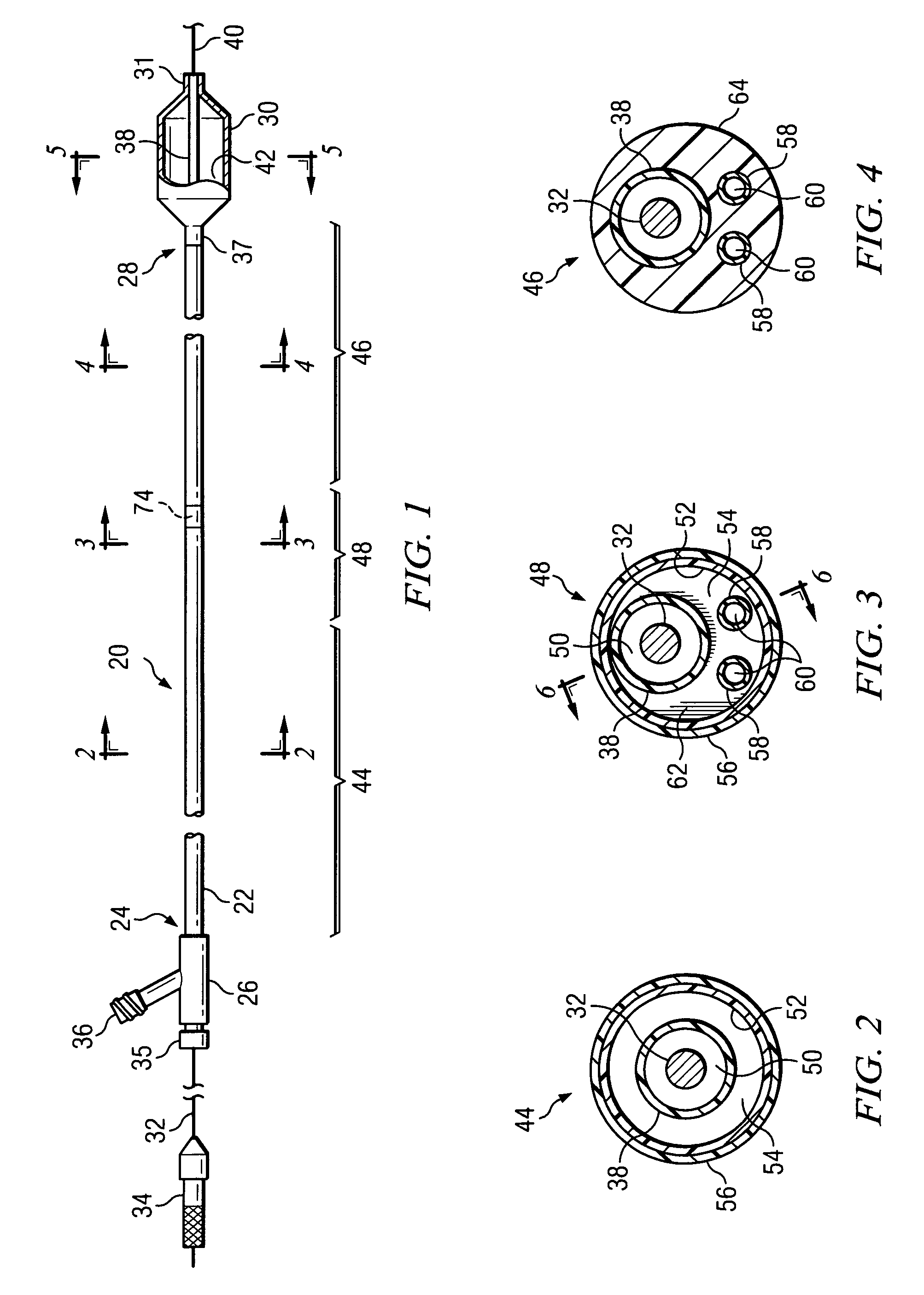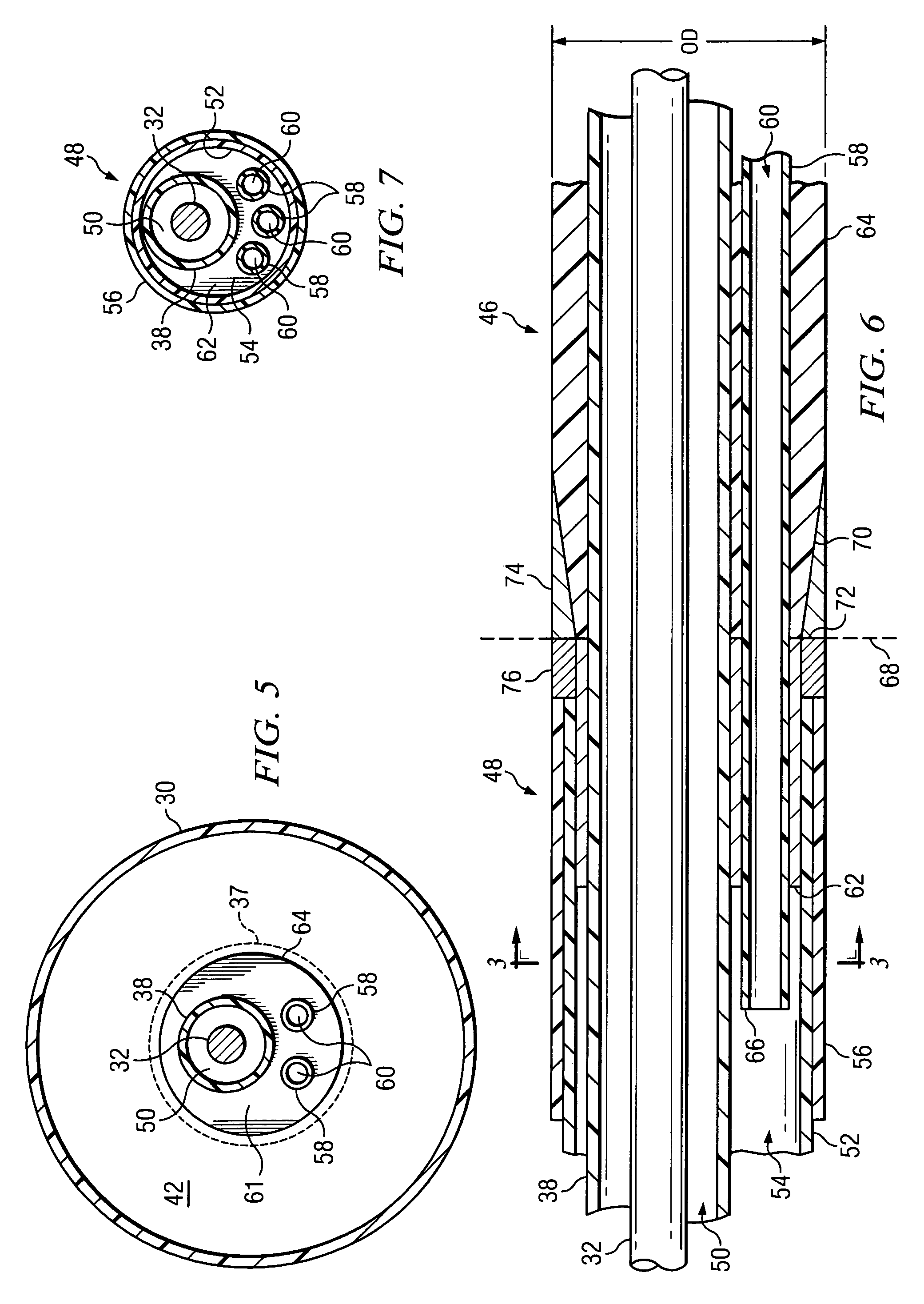Balloon dilation catheter having transition from coaxial lumens to non-coaxial multiple lumens
a balloon dilation catheter and multiple lumen technology, which is applied in the field of balloon dilation catheters and balloon dilation catheters, can solve the problems of poor trackability of catheter inflation/deflation time performance, increased time required for balloon inflation and deflation, and suffered from the effect of inflation/deflation performan
- Summary
- Abstract
- Description
- Claims
- Application Information
AI Technical Summary
Benefits of technology
Problems solved by technology
Method used
Image
Examples
Embodiment Construction
[0021]The current invention is described below in greater detail with reference to certain preferred embodiments illustrated in the accompanying drawings.
[0022]Referring now to FIG. 1, there is illustrated a balloon dilation catheter in accordance with one embodiment of the current invention. While this design may be used to make catheters of any diameter, it is particularly suitable for small diameter catheters, e.g., those having a diameter of 5 French or smaller. The catheter 20 includes a shaft 22 having a proximal end 24 that may be affixed to an access fitting 26 and a distal end 28 that may be affixed to a dilation balloon 30. As explained in further detail below, a plurality of tubular members disposed within the catheter 20 define a plurality of internal passageways, known as lumens. One such tubular member, the guidewire tubular member, extends longitudinally through the catheter from the access fitting 26 to the distal end 31 of the balloon 30. The guidewire tubular membe...
PUM
| Property | Measurement | Unit |
|---|---|---|
| pressures | aaaaa | aaaaa |
| pressures | aaaaa | aaaaa |
| length | aaaaa | aaaaa |
Abstract
Description
Claims
Application Information
 Login to View More
Login to View More - R&D
- Intellectual Property
- Life Sciences
- Materials
- Tech Scout
- Unparalleled Data Quality
- Higher Quality Content
- 60% Fewer Hallucinations
Browse by: Latest US Patents, China's latest patents, Technical Efficacy Thesaurus, Application Domain, Technology Topic, Popular Technical Reports.
© 2025 PatSnap. All rights reserved.Legal|Privacy policy|Modern Slavery Act Transparency Statement|Sitemap|About US| Contact US: help@patsnap.com



